Indonesia’s Pindad SS2 – Service rifles from around the world
- By Travis Pike
Share This Article
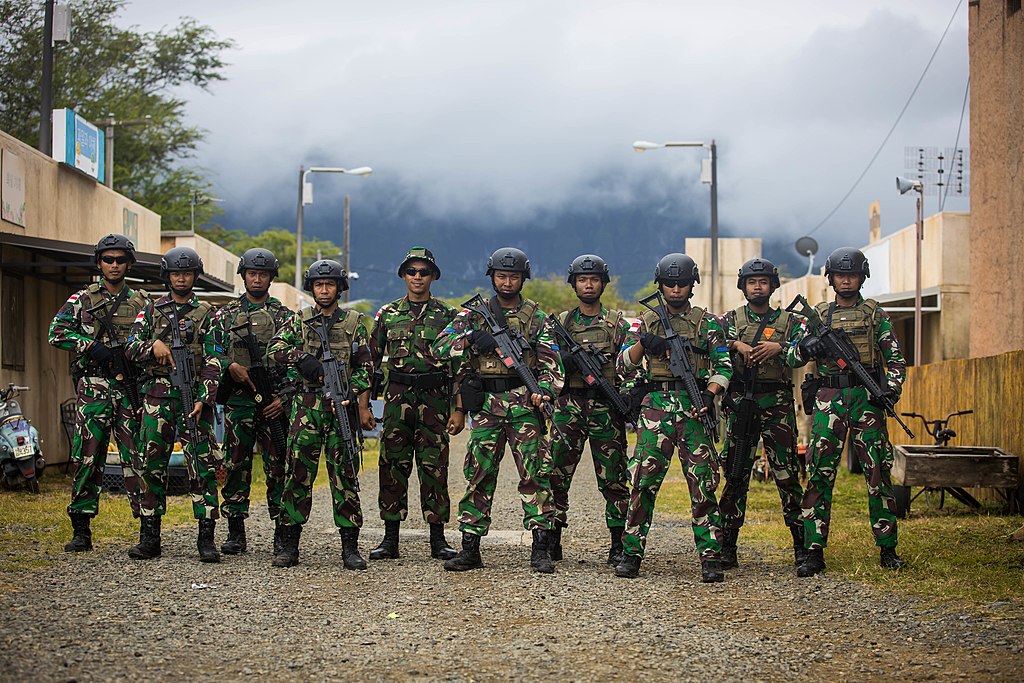
Indonesia has a fairly impressive military force that’s not often discussed. It’s an all-volunteer force consisting of 400,00 active-duty troops and 400,000 reserves. With a $9.27 billion budget, the Indonesian military might not be a major regional player like the United States or China, but that doesn’t stop it from having some solid weapons. Today, we’ll discuss its fairly modern service rifle known as the Pindad SS2.
The Pindad SS2 is developed and designed by Pindad, a state-owned and operated arms manufacturer that designs practically all the small arms for the Indonesian regular forces. Production for the SS2 began in 2002, with prototype variants reaching the military. In 2005 the rifle was officially adopted and it entered service in 2006.
Breaking down the Pindad SS2
The Pindad SS2 replaced and is based on the SS1 which was a licensed copy of the FN FNC. The FNC series of rifles was produced in the late 1970s as FN entered the 5.56 assault rifle realm. Indonesia was the first to adopt the FNC in 1982 for its air force.
The Indonesian Air Force was pleased with the rifle, and the entire Indonesian military took notice. This led to PT Pindad acquiring a license to produce the rifle, which became the SS1 domestically. However, the rifle’s design was slightly changed to better suit tropical environments and the ergonomic needs of Indonesian soldiers.
The SS2 uses the same base design as the SS1. It’s a long-stroke gas piston system similar to the AK and M1 Garand series of rifles. This rifle siphons off some of the gas created by firing a cartridge to drive the piston, allowing the weapon to cycle and function. The system has proven to be extremely reliable in nearly all environments.
The SS2 comes in several variations with varying barrel lengths and configurations. The longest barrel length is nearly 20 inches, and the shortest is 7.87. The rifles are quite heavy, weighing anywhere from 7.4 to 9.1 pounds. Like the FNC, the rifle fires a 5.56-caliber cartridge from a STANAG magazine.
Yet, the SS2 has some fairly interesting features that deviate from the FNC and SS1: The rifle uses an M16A2-style flash suppressor. It has an AK-style front sight and a Picatinny rail. The system has a flat-top upper receiver, allowing the user to mount optics. The flat top portion can mount an M16-style carry handle as a rear iron sight.
Related: Japan’s modern Howa Type 20 – Service rifles from around the world
The weapon’s many variations

The SS2 series was designed to arm diverse groups of troops. However, since there is no perfect rifle for every role – a special operations soldier will need something different from an infantryman, and a member of an armored crew will need something different from either – the SS2 has seven variants.
The SS2-V1 is a variant with an 18.11-inch barrel and a folding metal stock that weighs 7.49 pounds. This seems to be the basic variant of the rifle and likely the most commonly issued.
The SS2-V2 is a carbine variant with a 15.86-inch barrel and a folding stock. It weighs 8.4 pounds.
The SS3 is a 7.62mm variant designed for snipers and designated marksmen.
The SS2-V4 is a slightly more advanced model. It has an 18.11-inch barrel and weighs 9.1 pounds. It features a Picatinny handguard, which allows for the mounting of accessories but adds substantial weight.
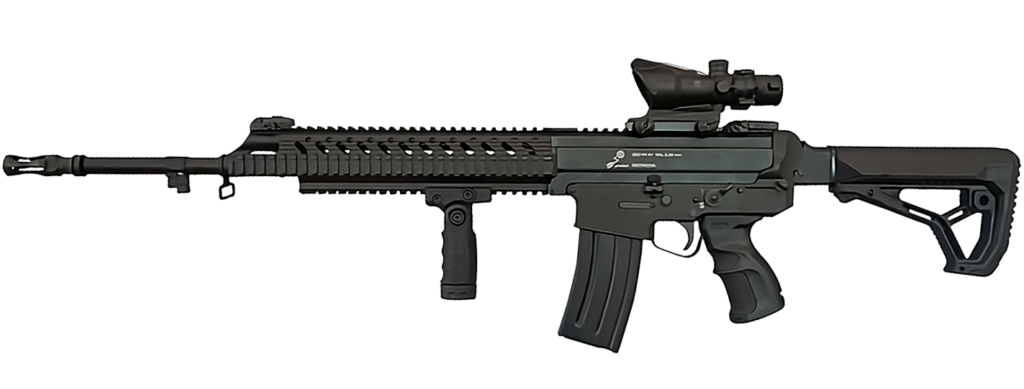
The V5 model features an ultra-short 9.92-inch barrel. The A1 version features a Picatinny handguard and AR-type rifle stock that collapses and folds. The V5 weighs 7.4 pounds.
The SPM-1 is a 5.56 caliber designated marksmen’s rifle designed for long-range engagements. The barrel is 19.68 inches long and appears to have a free-floated M-LOK handguard.
Finally, there is the SS2-V7 for which there isn’t a lot of information available. It’s listed as a subsonic variant and uses a suppressor. The barrel is 7.87 inches long. While it’s not clear based on Pindad’s website, I think the rifle is a .300 Blackout design, which would account for the suppressed, subsonic design and for the extremely short barrel.
Accessories and modularity
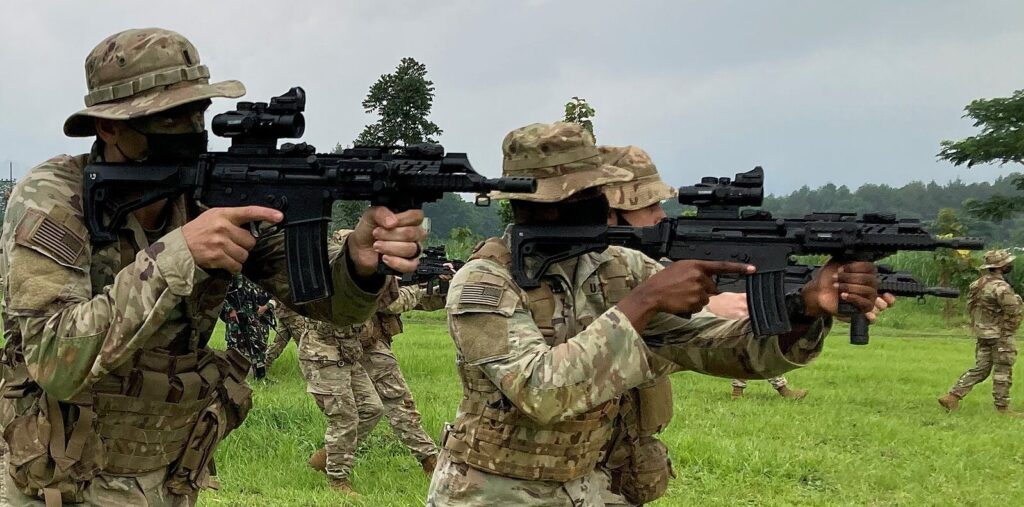
The Pindad SS2 rifles fit with a Picatinny handguard. The rails allow you to mount any number of accessories including lights, lasers, bipods, foregrips and so much more. The rifles are optics-ready, and the Indonesian military seems to be fielding a variety of optics.
The Trijicon ACOG is very popular and is an amazing military optic. It offers 4X magnification, a bullet drop compensating reticle for easy holdovers, and it’s solar-powered. There is also the domestically produced KISS scope and another prism-style sight with an attached red dot. The usual suspects of bayonets and 40mm grenade launchers are also mountable.
The SS2 series of rifles appears to be a successful modernization of the SS1. It shows that the Indonesian military is progressive and willing to adapt and adopt to stay current and provide its troops with modern rifles.
Feature Image: Indonesia-Korps Marinir Republik Indonesia Marines pose for a group photo while conducting simulated Military Operations in Urban Terrain (MOUT) during Rim of the Pacific (RIMPAC) 2022, July 15. (U.S. Marine Corps photo by Cpl. Haley Fourmet Gustavsen)
Read more from Sandboxx News
- The B-2 Spirit is aging but still packs a bunch
- Why can’t the US stop drone swarms from penetrating restricted airspace?
- Delta Force escapades with Poland’s elite GROM special operations unit
- The Air Force is letting troops play a video game to prepare for global conflict
- Montana Knife Company enters the tactical knife realm
Related Posts
Sandboxx News Merch
-

‘Sandboxx News’ Dad Hat
$27.00 Select options This product has multiple variants. The options may be chosen on the product page -

‘AirPower’ Golf Rope Hat
$31.00 Select options This product has multiple variants. The options may be chosen on the product page -

F-35 ‘Lightning’ Framed Poster
$45.00 – $111.00 Select options This product has multiple variants. The options may be chosen on the product page

Travis Pike
Travis Pike is a former Marine Machine gunner who served with 2nd Bn 2nd Marines for 5 years. He deployed in 2009 to Afghanistan and again in 2011 with the 22nd MEU(SOC) during a record-setting 11 months at sea. He’s trained with the Romanian Army, the Spanish Marines, the Emirate Marines, and the Afghan National Army. He serves as an NRA certified pistol instructor and teaches concealed carry classes.
Related to: Gear & Tech
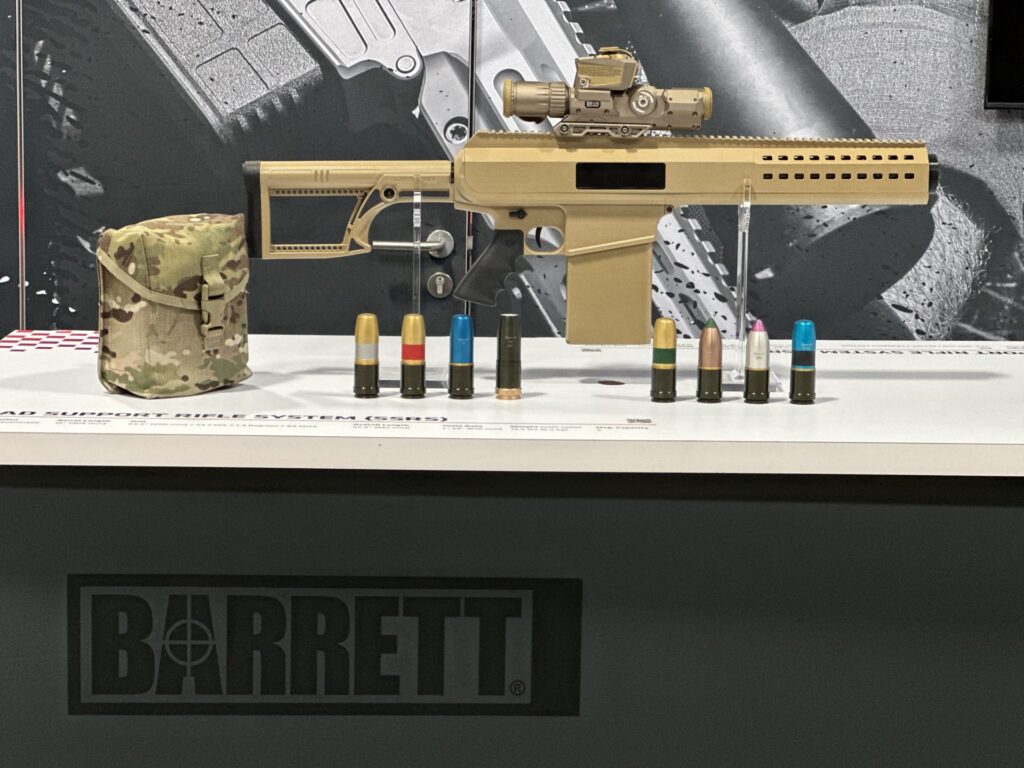
Barrett’s Squad Support Rifle System will make infantry squad deadlier
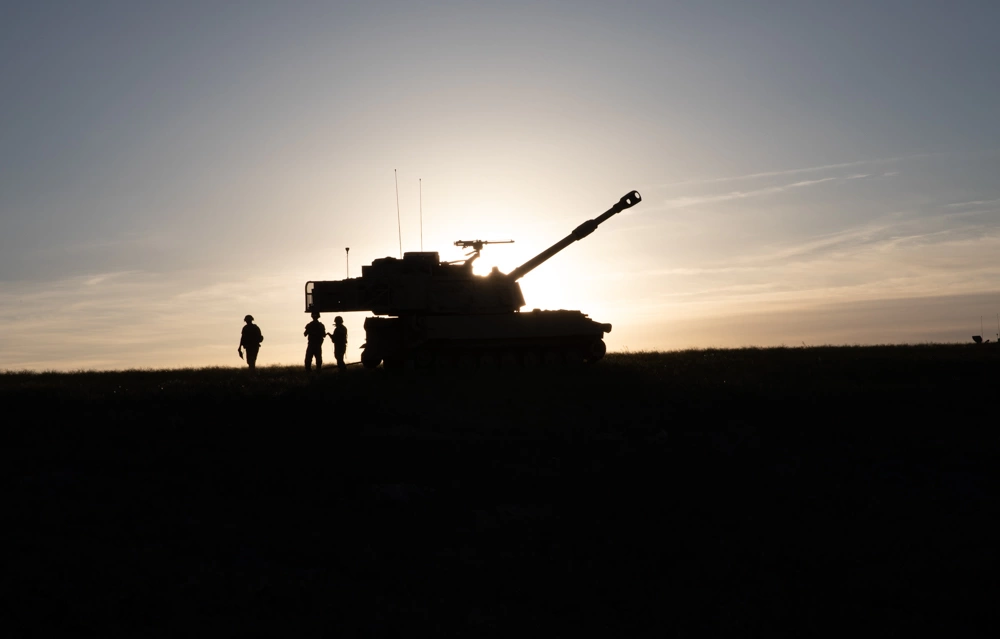
The unique world and uses of howitzers

How close are the Colonial Marines from ‘Aliens’ to actual Marines
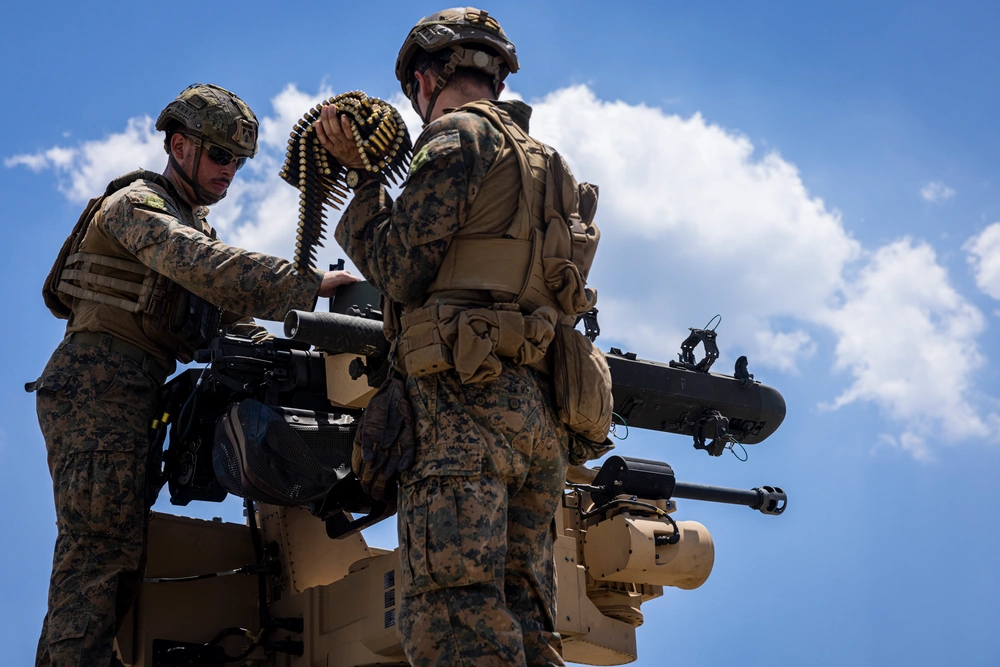
The Marine’s new air defense system is a game changer
Sandboxx News
-

‘Sandboxx News’ Trucker Cap
$27.00 Select options This product has multiple variants. The options may be chosen on the product page -

‘AirPower’ Classic Hoodie
$46.00 – $48.00 Select options This product has multiple variants. The options may be chosen on the product page -

‘AirPower’ Golf Rope Hat
$31.00 Select options This product has multiple variants. The options may be chosen on the product page -

‘Sandboxx News’ Dad Hat
$27.00 Select options This product has multiple variants. The options may be chosen on the product page
